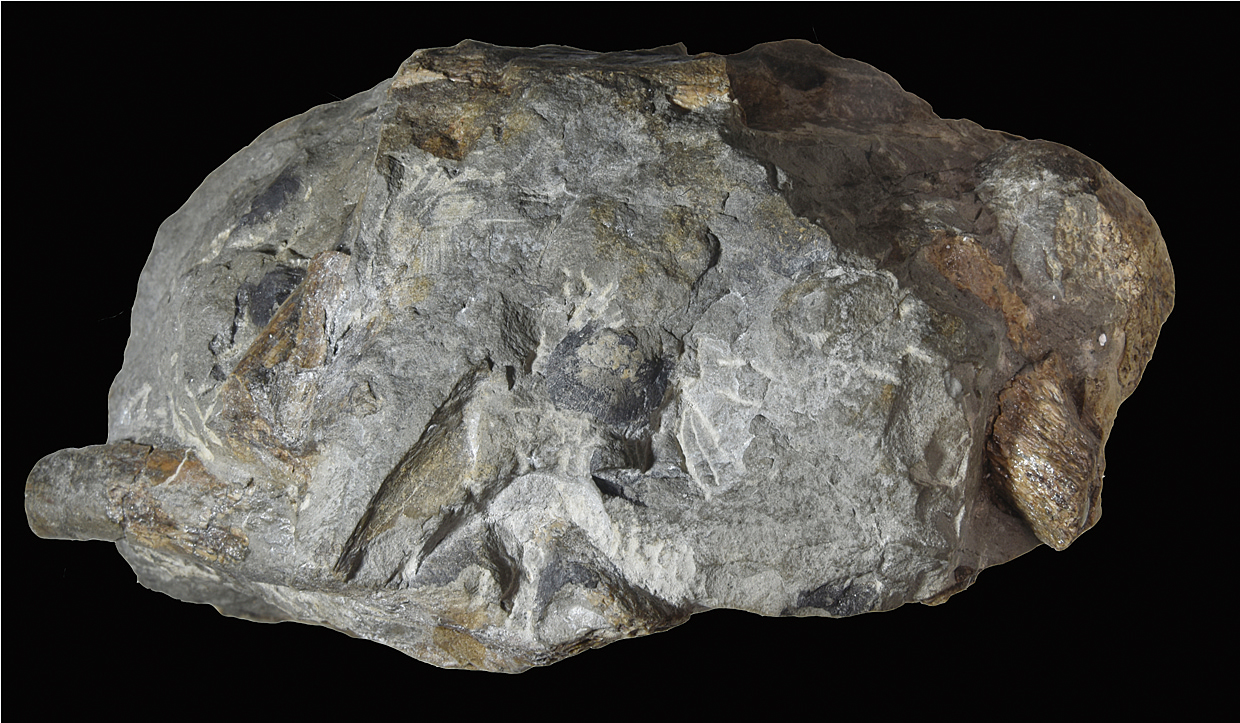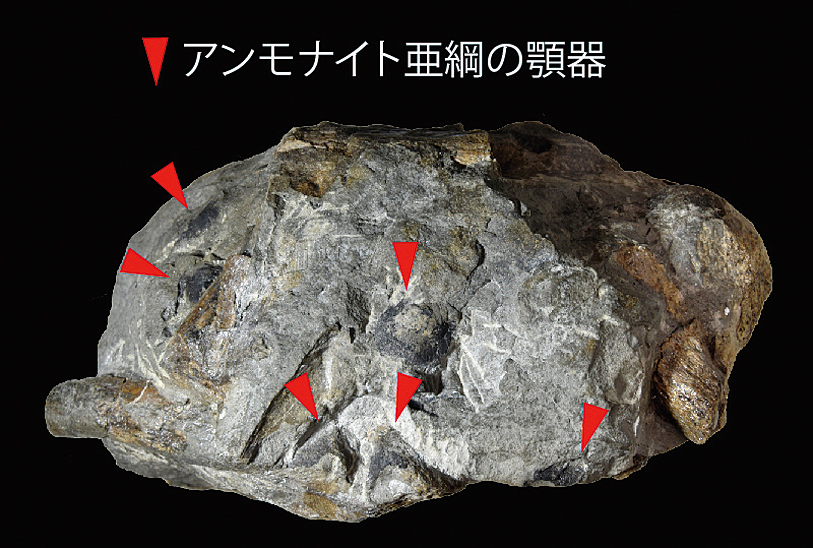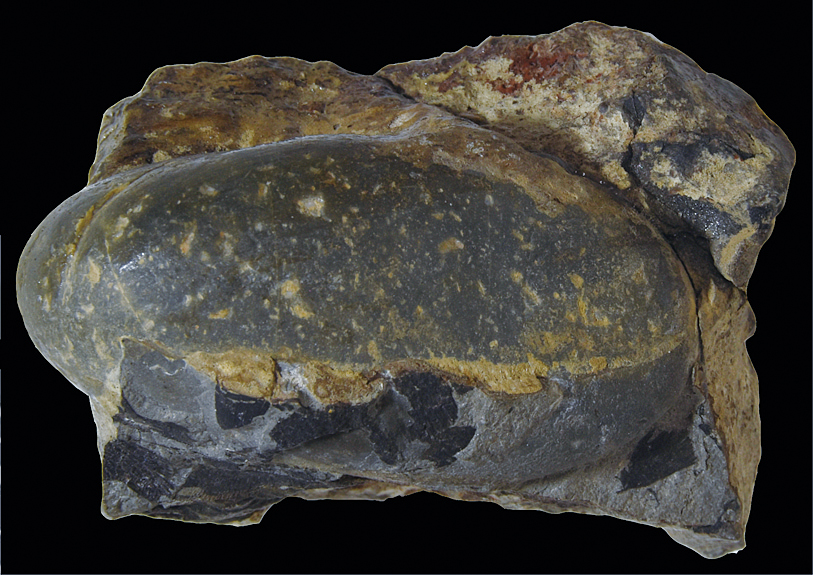B18
Stomach contents of a polycotylid plesiosaur
direct evidence of predator-prey relationship of deep time
Estimating diet of extinct vertebrates involves difficulties. Popular methods of diet reconstruction are macro morphology of tooth, carbon and nitrogen isotopes, microwear on tooth, and stomach contents of fossil skeleton. However, in application to Mesozoic vertebrates, isotope analyses were usually not applicable due to diagenesis and interpretations of microwear are difficult due to the lack of modern analogues. Macro morphology of tooth can reveal only rough diet category, such as carnivore and herbivore. Therefore stomach contents are currently the strongest evidence in reconstructing diet of Mesozoic vertebrates. The specimen described here is the stomach contents of polycotylid presiosaurs from Obira town, Hokkaido, which forearm was shown in the previous pages. The specimen exhibit several gastralia and jaws of cephalopods, the group that includes squids, octopuses, Nautilus, and ammonites. Morphologies of jaws indicate its affinity to ammonoids and this specimen is considered as the evidence of plesiosaurs prayed on ammonoids. Beside this specimen, fish bones were often found as stomach contents of plesiosaurs. Also, bivalves, gastropods, and crustaceans were found as stomach contents of a elasmosaurid, long-necked plesiosaur. Dinosaur bones co-occurred with large short-necked plesiosaur, Pliosaurus, and scavenging of floating dinosaur was proposed as an possible scenario. Gastroliths were also occurred with this policotylid. Gastroliths were often found with long-necked plesiosaur, but it is rarely found from short-necked plesiosaur like policotylids. Gastroliths perhaps helped digestion. Based on its morphology, gastroliths of various plesiosaurs were inferred to have been swallowed at river mouth and coast. Some plesiosaur remains were found from river deposits, which probably lived in rivers. (Tai Kubo)
References
Sato, T. & Tanabe, K. (1998) Cretaceous plesiosaurs ate ammonites. Nature 394: 629–630.



